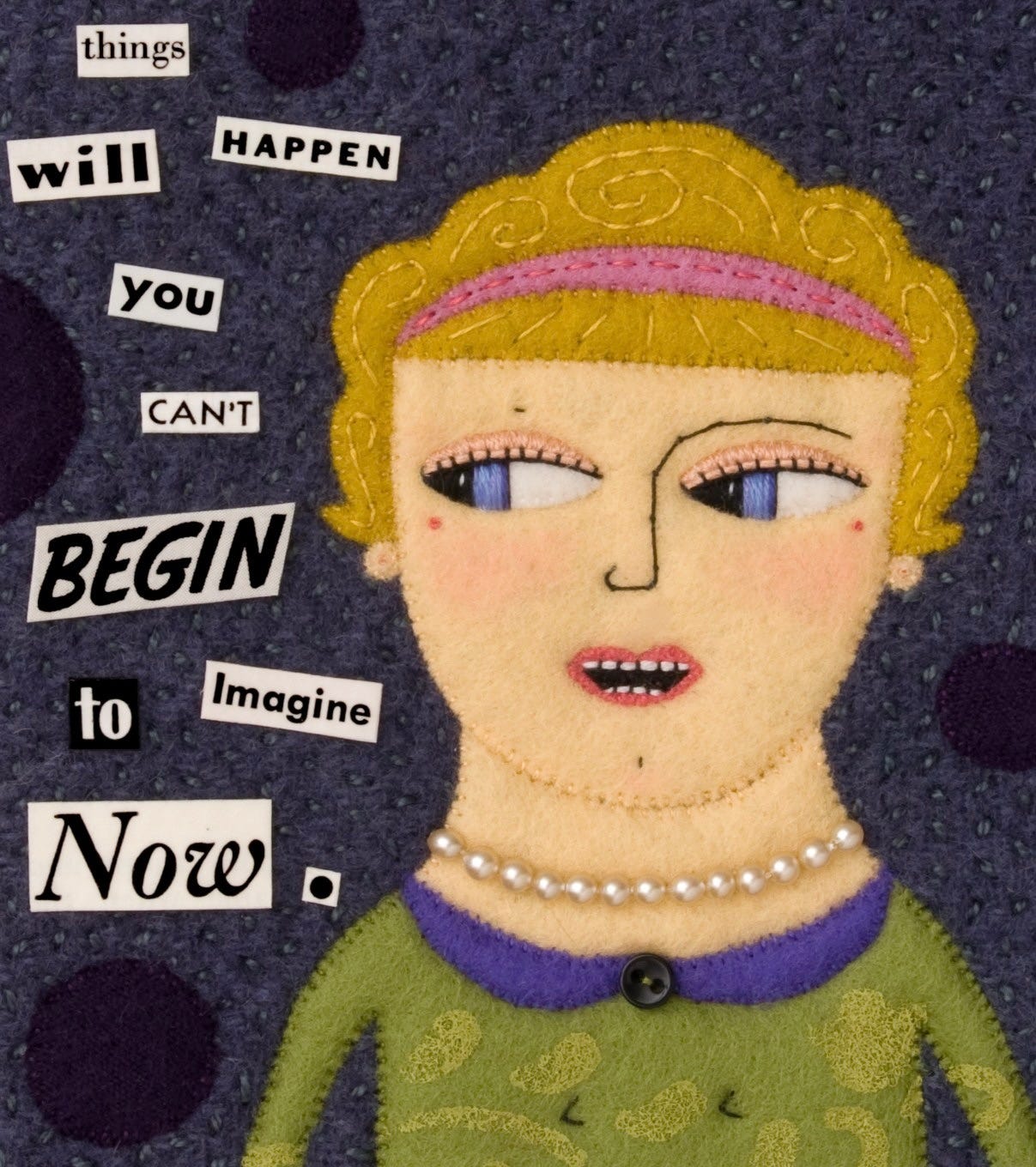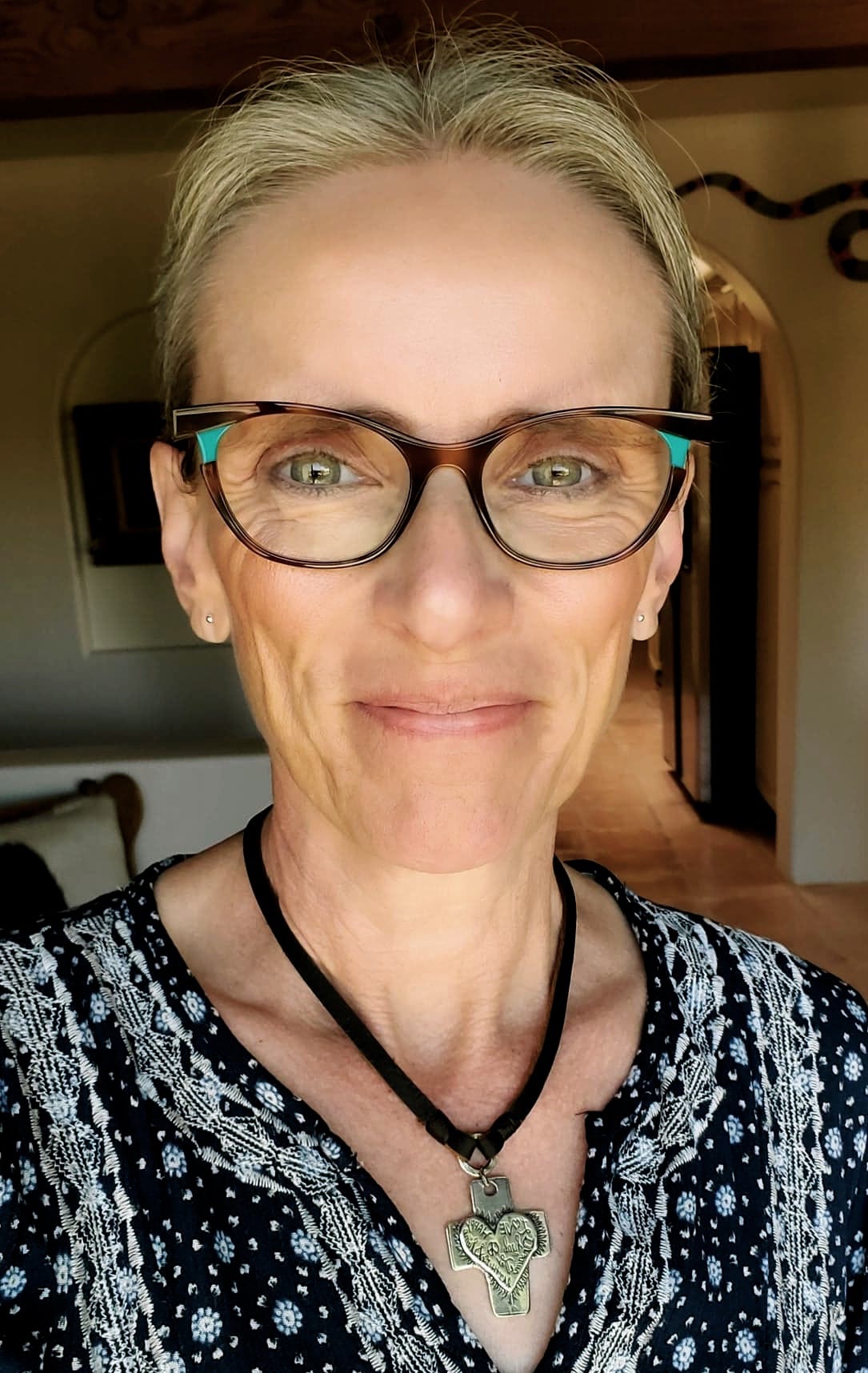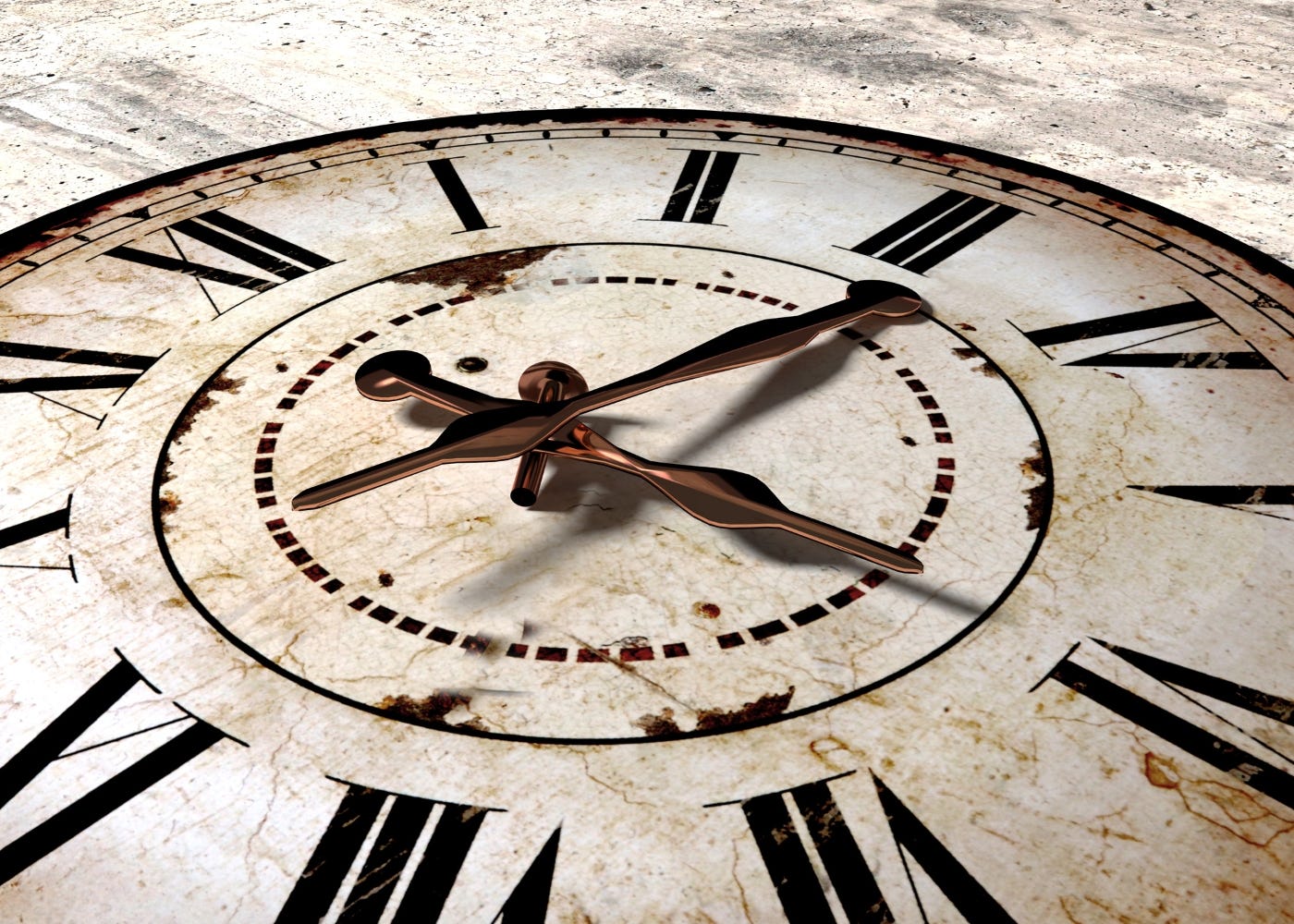Slow Work
by Susan Hinckley
Above all, trust in the slow work of God.
… and accept the anxiety of feeling yourself
in suspense and incomplete.
—from Patient Trust, by Pierre Teilhard de Chardin
Cynthia and I are taking the CAC’s Living School course
over the next year, and the curriculum this week includes a video in which someone brings out a chair and sets it down, then Richard Rohr makes his slow way onto the screen and sits. He introduces this sitting with a few lines—something about how contemplation is “a long, loving look at the Real”—and then we all sit.
We sit, and we sit, and we sit.
Actually, I end up watching Richard sit in his shady New Mexico courtyard, since I can’t keep my eyes closed and concentrate on being in my own body for the whole 13 minutes of sitting. I don’t know how you’d do, but after a few minutes its me watching Richard sit, wishing the video would end. I’m not very good at just being.
He offers the beloved lines:
Be still and know that I am God.
Be still and know that I am.
Be still and know.
Be still.
Be.
He’s still still. Meanwhile, my head doesn’t miss a single beat, banging on insistently that it’s meant to be running this—and every other—show.
Such clenched hands.
When I was working as a fiber artist, the comment I heard most often as people studied my work was that I must have enormous patience. They’d look for a moment, step closer, look a bit more, and suddenly it was like they could hear the slow tick of hours through the glass in the frame. My pieces were finely detailed and meticulously crafted—I white-knuckled every one of the thousands of stitches that went into them, and often spent as much time unpicking as I did putting stitches in. I worked on each piece for a month or more, despite their small size (6-8 inches or less). So many layers of dense work, so much of it unseen in the finished piece.
And such clenched hands.
The picture people saw in that frame was really a careful veneer covering a month of foundation stitching, unpicking, false starts, failed ideas, cover-ups, swears, what-ifs, wrong choices. Each piece was a journey, and when I finally settled it behind glass, it was because I was ready to stop fussing over that particular story and move on to the next. Eventually, each arrived at a place where I could walk away and let it rest, the relic of an original idea and where pursuing that idea had taken me.
So I understood why “patience” might be what some people saw in my work, and yet it surprised me too—I don’t think of myself as a patient person, and I never felt my art required it. It was, after all, a labor of love. I created it only because I wanted to. That so many other people appreciated it was icing on the cake.
And I did love the journey, valuing the process more than the product—each step building on the last. I loved trying to fix mistakes, how they sometimes sent me in new directions, or required that I learn to live with them. To me, my mistakes were often glaring, but choosing to stay in the discomfort of a thing I could have done better or wished I’d done differently was a baby step in the direction of my own growth. Hand sewing was a practice of sorts: imperfection inevitable.
But such clenched hands.
I kinda loved it when a finished piece didn’t reflect the original plan at all, because somewhere along the way, the work itself had shown me a better idea. I never felt I had much control over any of it, actually. I could make a drawing, I could have a plan, I could cut to the pattern, but when I began the slow work of stitching, the process took over and I was along for the ride.

I like to think this made my work better than it would have been if I’d been skillful enough to control everything from start to finish. When creating I tend to think small, focus too much on perfect execution and not enough on concept. I tend to hold too tightly—to the needle itself, but also to my own ideas and desires, my fears and flaws. If you’ve heard me talk about my 3 word prayer—open my hands—you can know that’s a direct reflection of decades of stitching.
My too-tight grip on the work was only ever a drawback. It never improved the finished piece. Years down the road, I can’t help but wonder how many things in my life might have been different if I’d known how to hold anything lightly.
When I first began speaking up about my struggle in Mormonism, I was thrown into a process where I also felt a loss of control. I’d kept my doubts contained for so many years, once I gave them voice I was afraid they’d never stop talking. I wondered where it would end. The only thing clear to me was that I would no longer be able to follow the pattern I’d relied on in my life up to that point. I was terrified, and after flailing around for a few years not knowing what I wanted to have happen, I realized something: faith wasn’t a tidy thing to carry in my pocket like an ID card. It wasn’t membership in a club or assenting to someone else’s rules and principles. Faith didn’t really have much to do with what I knew or didn’t know, but was instead about how to know.
I didn’t know then what I do now: that I do know how to know things. My bones register deep recognition, my heart discerns truth. I am safe in this journey. My head doesn’t dream knowing up, and my hands can’t squeeze truth into being, no matter how hard they clench. Faith is process, not product—a practice of imperfection.
I think often of a story a pilot friend told me. He was a teenager, sitting in the plane before his first solo flight, all sweaty palms and jittery stomach. His instructor looked him squarely in the eye and said, “You’re safe in the aircraft.” The teacher had watched this student carefully, and knew he was prepared for the next step.
No one in church ever said that to me—I’d had no practice trusting myself in spiritual things. No one had given me permission to just be. No one had assured me I was safe in my own faith-craft. And practice matters! After many thousands of hours, I could trust my hands with the needle. I made mistakes, but I knew they were really just part of the process.
Faith is the most human of journeys. It’s making our way along life’s path by feel. This thing God and I are creating together will always be a work in progress, densely layered and detailed, its evolving picture the product of my personal life, mind and heart. The journey is mine to experience, mine to create, mine to live. I walk it only because I want to. Whether anyone else appreciates it is immaterial.
Life happens one moment—one fleeting stitch—at a time. And we live with all of them.
“What is saving my life now is the conviction that there is no spiritual treasure to be found apart from the bodily experiences of human life on earth,” writes Barbara Brown Taylor. “My life depends on engaging the most ordinary physical activities with the most exquisite attention I can give them. My life depends on ignoring all touted distinctions between the secular and the sacred, the physical and the spiritual, the body and the soul. What is saving my life now is becoming more fully human, trusting that there is no way to God apart from real life in the real world.”1
She’s assuring me I already know how to do this.
In another Living School lesson, Shara Moscinska used the phrase, “an opportunity to grow down.” My ears perked up immediately: I recognized that things like sitting still for 13 minutes gave me just such an opportunity. That learning to be present to myself—present to the moment and whatever I’m doing in it—is growing down. As a kid, all I wanted was to grow up. As a Latter-day Saint, I thought all I was supposed to be about was growing more perfect, and therefore less human. No one ever mentioned, nor did it occur to me, that growing down might be where real learning could happen. That roots are more important than veneer. That what makes a thing real is all those thousands of stitches you don’t see.
Gripping it all more tightly? That’s never going to save me. Certainty won’t either—knowing is not an answer, but knowing how to know may be. I’m finding nothing is exactly what I thought it was, but again and again when I relax my grip, a little more of the picture reveals itself. My understanding of things I thought were settled continues to evolve.
Everything is more than what I saw when I first looked: I have realized that patience is trust. That waiting is preparation, stillness is practice, opening my hands is invitation, presence is willingness, being is prayer. I’m learning to listen for the slow tick not of hours but of moments—
This one right now.
Now this one.
I pray to let go of whatever exists five minutes from now in favor of this, to savor each little forever, to settle into the familiar rhythm of working without knowing, to remember that sometimes the work itself shows me a better idea, if I’m willing to let it. To grow down, down, deep into my most human soil. To be.
Richard Rohr describes prayer as “immersing myself in this moment.” I spent decades doing slow work. I wouldn’t have known to call that prayer at the time, but looking back I can see how my years of patient stitching were practice for being present to my real life. I am safe in the process—there is nothing to figure out, no need to unpick the stitches behind me, nothing to be gained by clinging to the ones ahead.
Barbara Brown Taylor, An Altar in the World: A Geography of Faith
Susan Hinckley






Thank you Susan arranging these words.
Thank you, Susan! Just last week I read a post by a writer/poet, John Roedel, and it made me think of your 3 word prayer. I’m going to take your essay today as a sign that I should share it with you. 🙂
https://www.facebook.com/862760275/posts/pfbid0KzUmkvp21agknSbtwgesF2vt8BeeXk7isUe7LBJGgkRwnLjsSSbAkzkQ4NL111Nel/?app=fbl